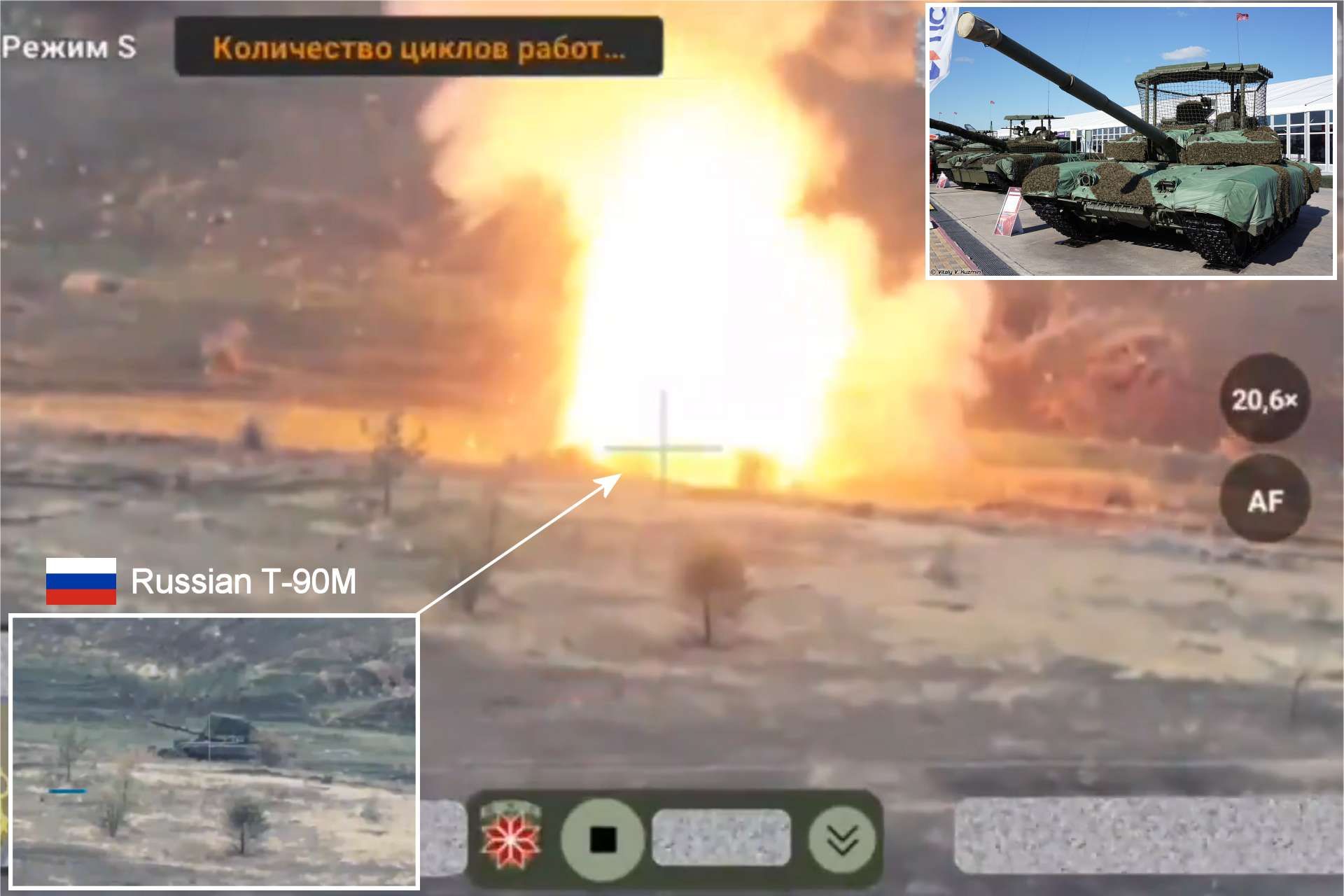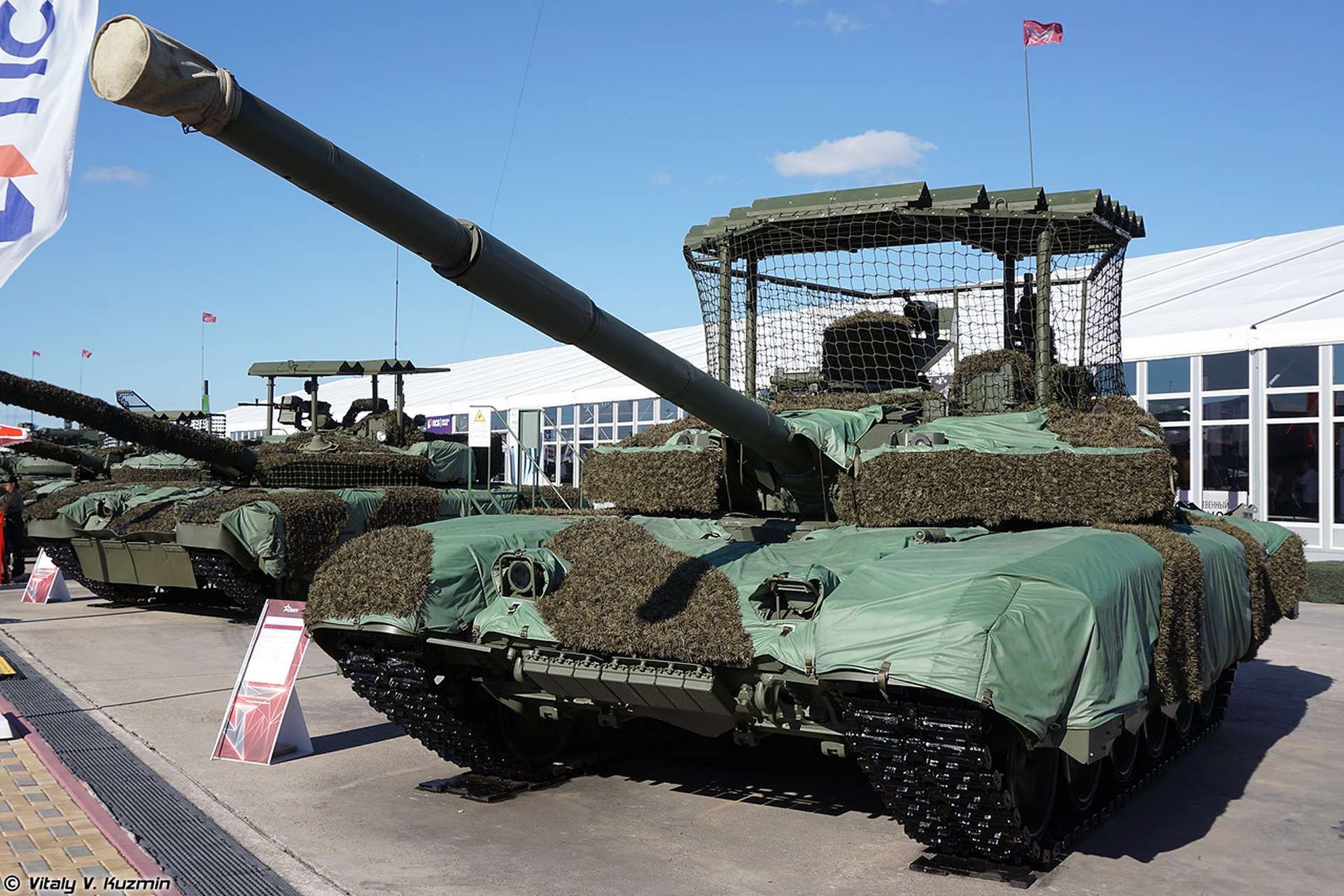Breaking News
Ukraine Destroys T-90M Russia’s Most Modern Main Battle Tank.
On October 18, a video circulated on social media showing the destruction of a Russian T-90M "Breakthrough" tank by a Ukrainian FPV (First-Person View) drone. This widely shared event once again highlights the growing importance of drones in the Ukraine conflict, as well as the vulnerability of armored vehicles to these increasingly sophisticated aerial systems.

A Ukrainian FPV drone destroys a Russian T-90M Main Battle Tank. (Picture source: Ukrainian MoD)
The T-90M "Breakthrough": A modern tank in the spotlight
The T-90M "Breakthrough" is one of Russia’s most advanced main battle tanks, designed to meet modern warfare requirements. It is equipped with a 125 mm cannon as its primary weapon, supplemented by a 7.62 mm PKT coaxial machine gun and a 12.7 mm NSVT machine gun. This arsenal allows the tank to engage both armored and unarmored targets, while also offering anti-infantry capabilities. The T-90M also features sophisticated armor, including standard armor and Relikt explosive reactive armor designed to reduce the impact of anti-tank munitions. Additionally, the tank has an anti-RPG metal net and bar armor, aimed at enhancing protection against portable anti-tank weapons.
Weighing 46,500 kg, the T-90M is robust yet maintains notable mobility, with a top speed of 60 km/h. This Russian tank is designed to operate effectively in various terrains and climatic conditions, with an operational range of 550 km. With a nuclear, biological, and chemical (NBC) protection system, a fire detection and suppression system, a front-mounted bulldozer blade, and a deep-water fording kit, the T-90M is capable of surviving in hostile environments and crossing difficult obstacles.
The tank is operated by a crew of three: the commander, the driver, and the gunner. Its imposing dimensions, with a length of 6.68 meters, a width of 3.78 meters, and a height of 2.23 meters, show that it is a heavy vehicle, yet it retains relative agility thanks to its modern fire control system and active protection system, designed to intercept and neutralize enemy projectiles before they hit the tank. The T-90M thus represents a major technological evolution compared to previous versions, incorporating modern combat systems while offering enhanced protection against a wide range of threats.
However, despite its modernity and protection, this tank was targeted by a Ukrainian drone, marking another failure for Russian forces to protect their heavy equipment against the aerial threat.

The T-90M "Breakthrough" is one of Russia’s most advanced main battle tanks. (Picture source: Vitaly Kuzmin)
The role of FPV drones in the Ukraine war
FPV drones, equipped with cameras that allow operators to control them remotely in real time, have proven to be formidable weapons in the Ukraine conflict. Although their range and payload are limited, they are capable of hitting targets with great precision, as demonstrated by this attack on the T-90M.
The use of these drones allows Ukrainian forces to overcome disadvantages related to heavy equipment by attacking specific targets with explosive charges, making even the most modern tanks vulnerable to rapid and unpredictable aerial attacks.
The cost-to-destruction ratio of such equipment is very favorable, which has prompted armies around the world to reconsider the production and use of FPV drones. France and the United States have made significant progress in this area recently, unveiling new UAVs that will soon be sent to Ukraine.

View of an FPV drone before the strike on the Russian T-90M tank. (Picture source: Ukrainian MoD)
The impact of Russian tank losses
The loss of Russian tanks, particularly advanced models like the T-90M, highlights the difficulties faced by the Russian armed forces. Such attacks reinforce the message that armored vehicles, despite their protection, are far from invulnerable in a war where drone technology plays an increasingly important role.
The cost of the T-90M is also a factor to consider: these tanks represent a significant investment for the Russian military, and their loss affects not only troop morale but also long-term operational capacity.
Conclusion
The destruction of the T-90M "Breakthrough" by a Ukrainian FPV drone is another striking example of the evolving conflict in Ukraine, where drone technology is reshaping traditional military strategies. This attack underscores the importance of military adaptation to these new threats and reinforces the role of drones as a key component of future military operations. The success of this operation also highlights the challenges Russia faces in keeping its armored forces safe from the relentless assaults of Ukrainian drones.


























